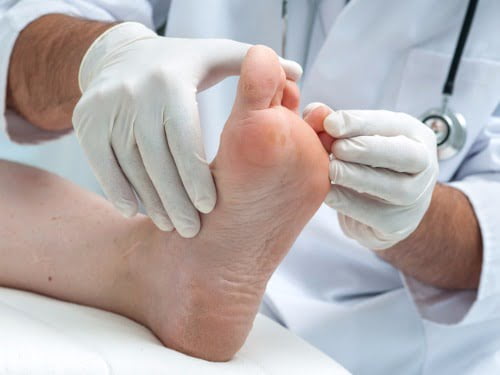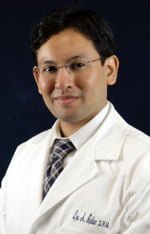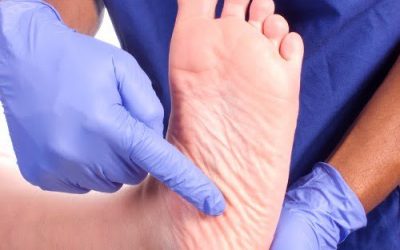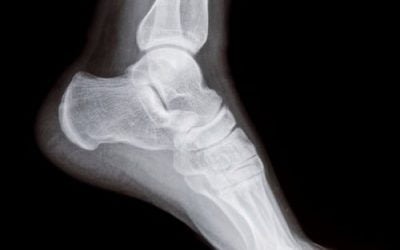How can a podiatrist diagnose CMT?
When examination reveals characteristics of CMT such as the presence of a cavus foot type (a high arched foot as opposed to a flat foot), muscle weakness, reduced light touch sensation, reduced protective sensation and reflexes, and an awkward gait, it can point to the need for a neurology consult. By implementing the tools of a patient’s history along with the physical examination, a podiatrist can help point the patient toward a working diagnosis.
Gene therapy plays a role in so many studies and treatments of neuro-muscular disease. What type of research is occurring now for CMT?
Transgenic mouse models have led to the identification of an enzyme, histone deacetylase 6, as a potential therapeutic target for inherited peripheral neuropathies (d’Ydewalle C, et al, 2012) of which CMT is one. This enzyme is important in the regulation of axonal transport. Nerves fire messages through axons.
In what way can a podiatrist address the CMT patient’s walking ability or comfort?
A study in Muscle Nerve 2012 (Ramdharry et al) supported the use of a brace called AFOs (ankle foot orthoses) to reduce foot drop, which may be seen in CMT gait patterns. Orthotics may also help early stage CMT. In general, orthotics have benefited many patients due to the improved biomechanics of the foot when wearing them. AFOs and orthotics are generally made by podiatrists since podiatrists can not only make an appropriate mold of the foot and ankle but also examine the gait and posture in a way that most specialties cannot. Bracing higher than the ankle usually is fitted by podiatrists and bracing specialists.
If a CMT patient has muscular deficits, what can be done to restore or preserve function and strength?
As with any other muscular condition, such as trauma, physical therapy can help to improve range of motion, strength, proprioception and gait.
Are there medications available that are not oral medications for treating the symptoms of CMT?
Oral antineuropathics and oral muscle relaxants have helped many people who have either neuropathy (burning, tingling) or muscle stiffness. Compounding (similar to the old mortar and pestle that pharmacists used to “make” medications) has returned as a tool in pain management. Novel topicals have started to arise using combinations of baclofen (a muscle relaxant), gabapentin (antineuropathic), lidocaine (anesthetic) and diclofenac (a nonsteroidal anti-inflammatory). This combination is just one example of the many available.
Are the topicals safe and effective?
Every treatment whether medical, physical or surgical assumes some risk. Topicals, however, are well supported for being safer since they are not as systemic as oral medications. Doctor and patient should discuss the novel nature of these topicals.
What are other factors or discussions in the literature surrounding CMT?
When a patient has the experience of pain or fatigue, there may be a psychological component to address improving the physical self. In fact, Ramdharry et al (2012) have suggested that fatigue impacts CMT patients. A patient who works with a doctor and physical therapist can construct an exercise program with goals to reduce fatigue.
Dr. Reiter received his Bachelor of Arts degree from Brandeis University in the Classics (Greek and Latin) and in Linguistics and Cognitive Science with his first formal introductions into research between Brandeis and Yale Universities. He then completed his Doctorate of Podiatric Medicine at the New York College of Podiatric Medicine. Dr. Reiter continued his training at a Podiatric Medicine and Surgery residency program at the New York Harbor Health/Veteran’s Affairs Hospital located at the NYU School of Medicine, SUNY Downstate Medical Center, and St. Albans campuses. He has served in the capacity of Chief Resident.
He has surgical privileges at the Gramercy Surgery Center where he instructs residents in the multi-residency podiatric program. He also has privileges at Midtown Surgery Center, Staten Island University Hospital, and Montefiore Medical Center.
Dr. Reiter has been a member of American Podiatric Medical Association. He has also been an active member of the New York State Podiatric Medical Association, attending the annual New York Podiatric Clinical Conference. Dr. Reiter was a speaker at the 2009 conference.
Dr. Reiter has been nominated and elected into the New York Academy of Medicine, mainly for his achievements while at his research post in the Clinical Trials Unit of the Mount Sinai Medical Center and ongoing research at his alma mater, the New York College of Podiatric Medicine.
Coming from a family in the performing arts, Dr. Reiter has a keen interest in Dance Medicine with a sub-interest in the stage performer. Focusing on “movement”, he has also developed an appreciation for the unique concerns of the athlete.
Dr. Reiter has a myriad of conservative and surgical management programs that he tailors to each patient. In an initial examination, a partnership is formed where doctor and patient work together to promote healing and general health.
Dr. Reiter works alongside Dr. Cary Chapman, M.D. as an addition to the practice to implement orthotic therapy for many conditions as well as for dance/sports enhancement.








I have high arches, I have had surgery for bone spurs. As I age 67 I find that my toes turn under my feet . I have to keep my toe nails cut really short. I have neuropathy . My left leg goes numb from the knee up.